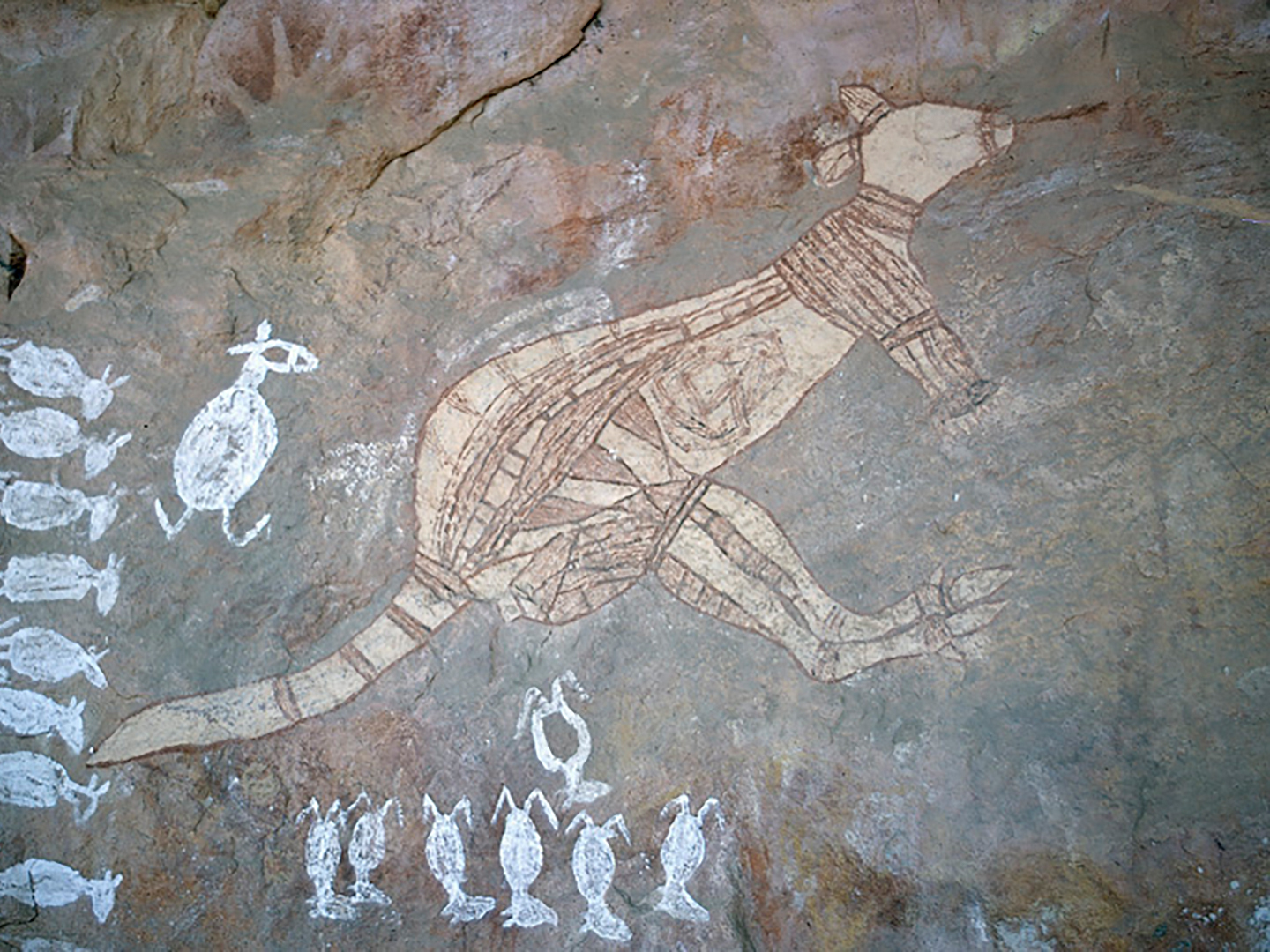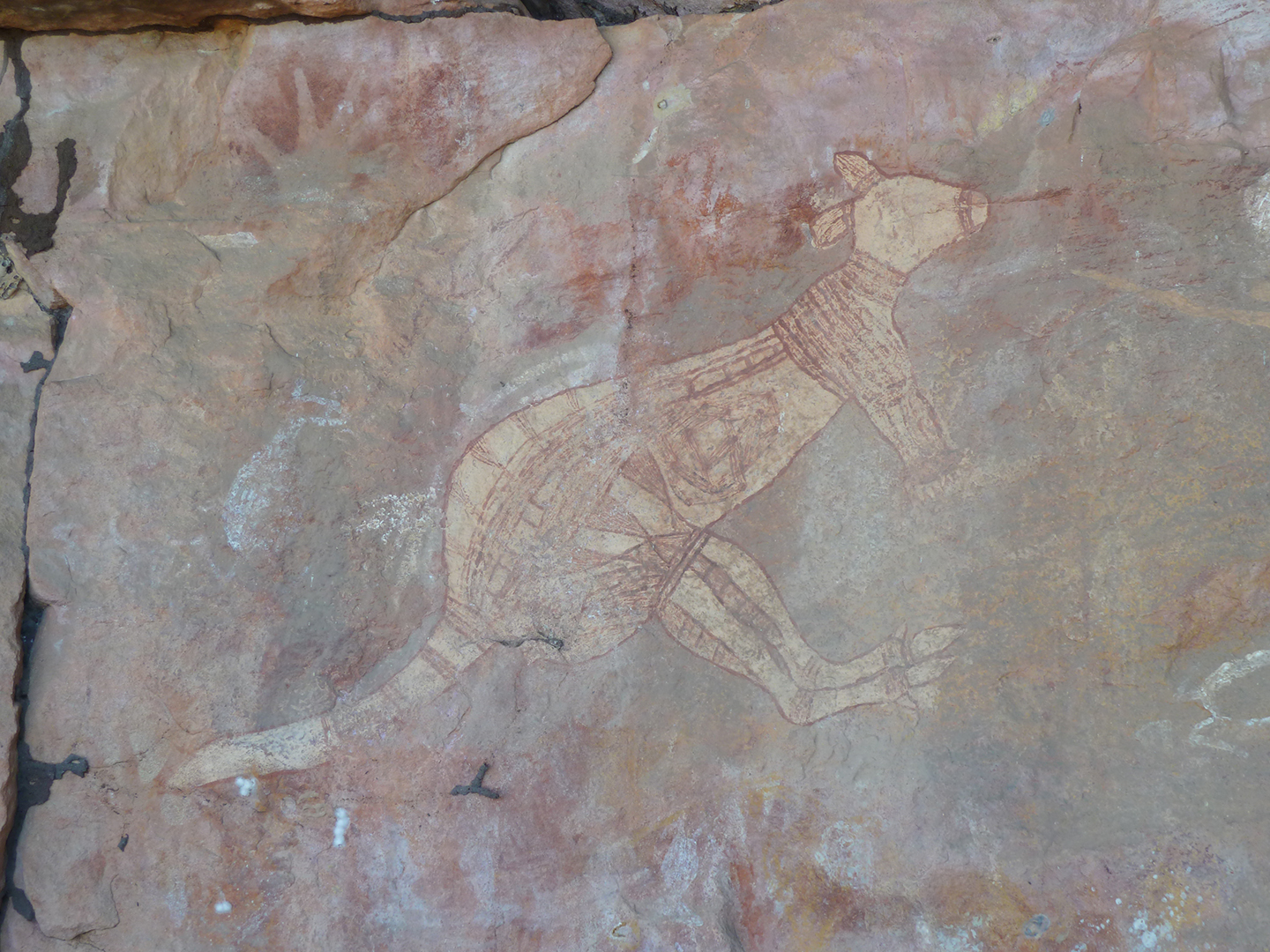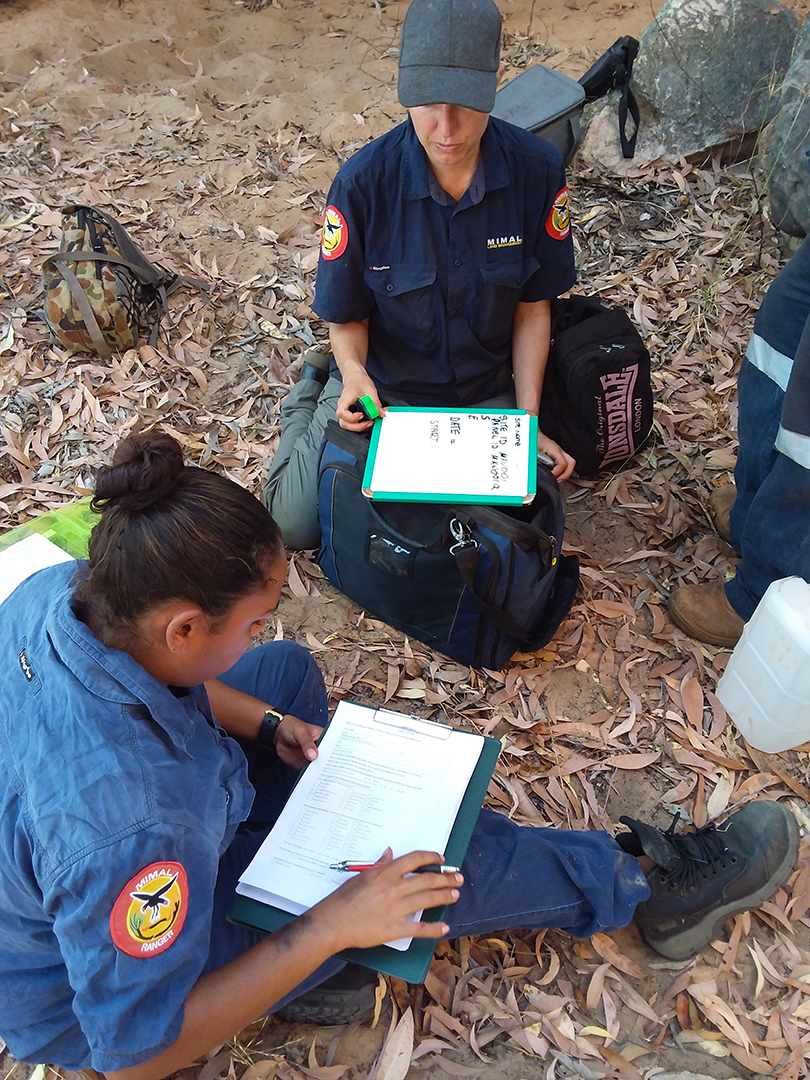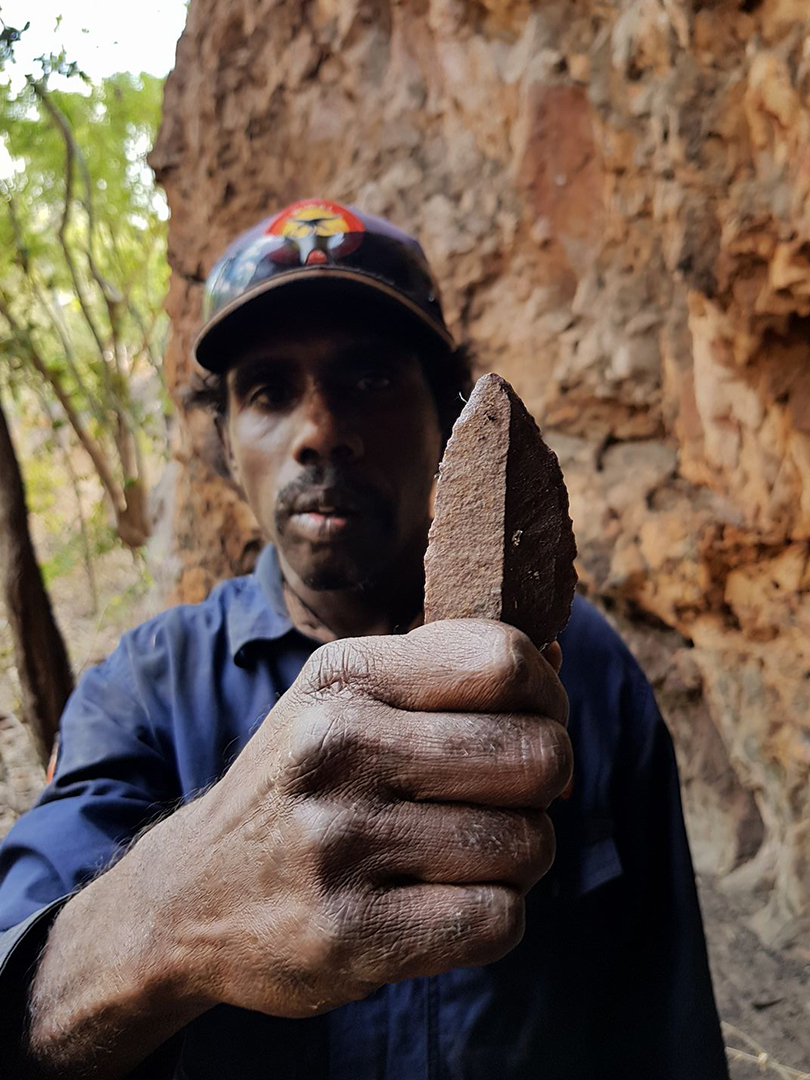
The sandstone rock country in central Arnhem Land is home to a precious art heritage reflecting tens of thousands of years of cultural continuity.
Rock art across the ‘stone country’, which Dalabon and Rembarrnga people call Badno and Ngalwad respectively, has been largely unseen and unrecorded in recent decades, but Mimal’s rock art project aims to revive its creative cultural legacy.
Mimal’s rock art coordinator Peter Cooke says there’s a strong desire for people to connect with their rich inheritance and manage it as their ancestors once did.
“In the last 50 years, Badno and Ngalwad has had decreasing visitation,” Mr Cooke said.
“A trend toward living in communities and the inaccessibility of the rugged sandstone landscape has kept rock art largely art out of sight.
“People are worried about buffalo, weeds and wildfires damaging cultural places, but they’re also worried about their own responsibilities.
“They want to reconnect with the places of their ancestors, play a pivotal role in management of the sites and ensure the younger generation can look and learn.”
The rock country accounts for 15 per cent of Mimal’s management area. The region has been the subject of scientific expeditions and a small number of sites have been visited and recorded, but much remains undocumented.
The project builds on the work of key surveys held in 1967 and 2014 and is focused on locating previously unrecorded sites.
“The 2014 survey was a wake-up call for urgent conservation,” Mr Cooke said.
“Landowners and rangers revisited sites along the western branch of the Wilton River, which were recorded and photographed in 1967 during a survey led by the noted researcher and national museum veteran Robert Edwards.
“They found some of the most significant galleries had deteriorated badly, in less than 50 years since they were photographed by Edwards.

The photographs of Jeladjabal gallery from 1967 ( left) and 2014 (right) dramatically illustrate the speed at which deterioration happens and foreshadows a rapid loss, particularly of the polychrome art painted in the 20th century.
“Mimal’s custodians see that locating, photographing and archiving the art ensures future generation will see paintings as they are today.
“They’re conserving an inheritance that is both precious to their families and significant to the world.”
Mimal has teamed up with Flinders University on the project.
“The project recognises scientific expertise but importantly it prioritises Indigenous engagement, participation and management,” Mr Cooke said.
“It is driven by the interests of landowners who work in collaboration with academics.
“Mimal has worked with Dr Daryl Wesley and his team from Flinders University to add archaeological expertise, emerging technology and field training capacity to the project.
“We’ve also developed a formal agreement that establishes the academic objectives of the university team and details stringent protections of Indigenous Cultural and Intellectual Property.”
Mimal and Flinders conducted a 10-day survey from a base at the unoccupied Korbbolyu outstation on Marrku clan country in September last year.
Twenty-four new sites were recorded during that time.
“A number of these sites included vibrant polychrome images painted at the end of the era of traditional occupation and use in the mid 20th century,” Mr Cooke added.
“The category of imagery most in need of urgent recording.
“A final count of motifs is not yet complete as analysis includes the use of a spectral imaging application which can reveal motifs invisible to the eye. The count can reliably be expected to be more than 2000 motifs.”
Importantly, the rock art project paves the way for staff to learn a raft of new skills.
“Staff are growing their knowledge and skills across all areas of cultural heritage management, from scientifically documenting sites to recording important cultural knowledge and stories from the elders,” Mr Cooke said.
“During last year’s survey, the men rangers lead the conservation work of removing threatening shrubs, small trees and spinifex while the women rangers focused on digital recording with still and video cameras.
“They used GPS to record locations and fill out survey forms and used standard terminology to describe art, artefacts and landscape context.”
Mimal is also utilising cutting-edge technology for archiving, analysis and accessing the digital data being collected in the field.
It has established a cultural heritage management system that enables the rangers to enter in their data and to then use that content to guide management decision-making, add interpretations and descriptions to content.
Mimal rangers landowners together with Flinders University team will continue to survey new sites in the Marrku clan estate in late June.







